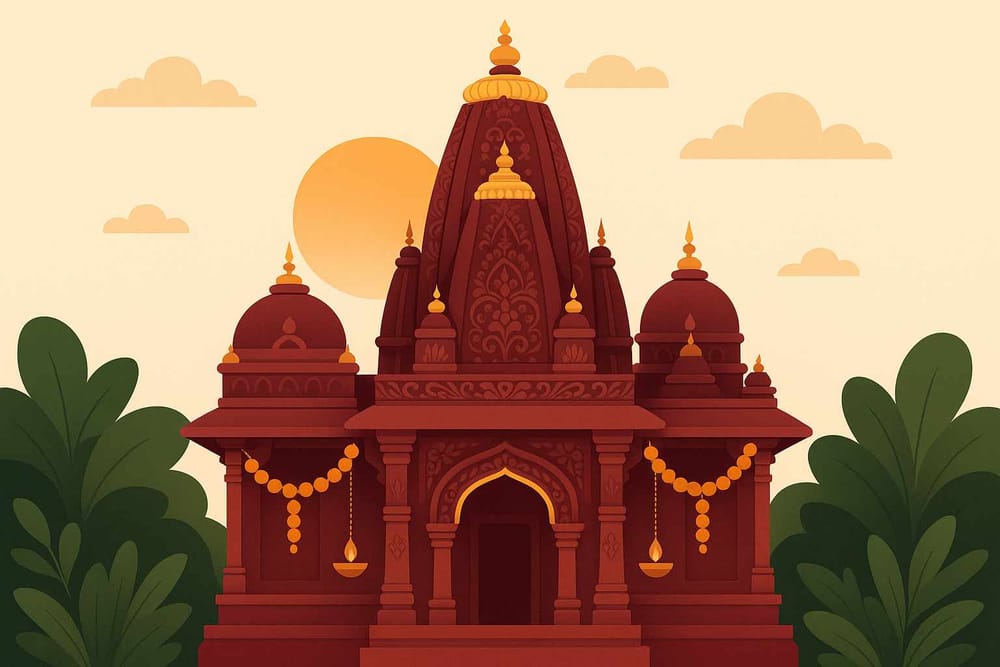
Echoes of Divinity: India's Temple Architecture - Spiritual Energy and Design
India's temples are more than just architectural wonders; they are sacred spaces, imbued with a spiritual energy that transcends time. These sanctuaries are deeply woven into the fabric of Indian culture, serving as centers of worship, community gathering, and artistic expression. Their intricate designs and timeless rituals continue to evoke reverence and awe, connecting devotees with the divine.
Exploring the Essence of India's Temple Architecture
Indian temple architecture is a profound embodiment of spiritual principles, seamlessly blending art, science, and devotion. These structures are not merely places of worship; they are meticulously designed spaces intended to facilitate a connection with the divine. Let's delve into the key aspects that make these temples so unique:
Sacred Geometry and Harmonious Design
- Vastu Shastra and Spatial Harmony: Temples are strategically positioned to harness solar and geomagnetic forces. The main deity is placed in alignment with the Earth's magnetic fields, promoting peace and energy balance within the temple. Vastu Shastra principles guide the entire design, ensuring that the temple harmonizes with the natural elements and cosmic energies. The placement of the garbhagriha (sanctum sanctorum), the entrances, and other structures are carefully planned to create a positive flow of energy, enhancing the spiritual experience for devotees. Bhaktilipi offers deeper insights into these ancient architectural sciences.
- Sacred Geometry and Cosmic Symbolism: Temples often incorporate sacred geometry, using mathematical patterns and shapes like mandalas and yantras that represent divine harmony and the interconnectedness of the universe. The shikhara (spire), a prominent feature in many temples, symbolizes the connection between the earthly and the divine, drawing the gaze upwards towards the heavens. These geometric patterns aren't merely decorative; they are believed to channel positive energy and create a sacred atmosphere.
Spiritual Energy and Vibrations
- Resonance with Cosmic Energies: Temples are often constructed using specific materials and dimensions believed to resonate with cosmic energies. The choice of materials, such as granite or sandstone, is not arbitrary but based on their ability to retain and amplify spiritual vibrations. This creates an environment conducive to deep meditation and connection with the divine.
- The Garbhagriha: The Heart of the Temple: The garbhagriha, or sanctum sanctorum, is the most sacred space within the temple. It houses the deity and is considered a point of concentrated spiritual energy. The atmosphere within the garbhagriha is charged with reverence, and devotees experience a profound sense of connection with the divine presence during darshan (viewing the deity).
Design and Symbolism: A Multi-Sensory Experience
- Symbolism and Artistic Expression: Every element of a temple's design is imbued with symbolism. Intricate carvings adorn the walls, depicting mythological stories and spiritual teachings. The temple tower, or shikhara, often represents Mount Meru, the cosmic axis in Hindu cosmology. These artistic expressions serve not only as aesthetic enhancements but also as visual reminders of spiritual truths.
- A Symphony of Senses: Visiting a temple is a multi-sensory experience. The ringing of bells, the fragrance of incense, the flickering of lamps, and the chanting of mantras create an atmosphere of devotion and reverence. These sensory elements help to quiet the mind and open the heart to spiritual experience. The Bhaktilipi collection expands on the significance of these rituals.
The Five Elements: Earth, Water, Fire, Air, and Space
- Embodiment of the Divine: Hindu temples incorporate the five basic elements: earth, water, fire, air, and space. These elements are not merely symbolic but are considered essential components of creation. The temple's foundation represents the earth, the sanctum walls symbolize water, and the tower above embodies fire. The open spaces within the temple allow for the free flow of air, while the dome or spire often represents space, connecting the temple to the cosmos.
- Regional Variations: Temple architecture varies significantly across India, reflecting the diverse cultural landscape. From the towering gopurams of South Indian temples to the curvilinear shikharas of North Indian temples, each region showcases its unique style. These regional variations add to the richness and beauty of India's temple heritage.
Bhaktilipi: Your Gateway to Devotion and Timeless Wisdom
Bhaktilipi.in is a digital sanctuary dedicated to preserving and sharing the treasures of devotional literature and stories. We strive to make these timeless teachings accessible to modern readers, fostering a deeper understanding of India's rich spiritual heritage.
Why Bhaktilipi?
- Preservation: We carefully curate and preserve sacred texts and devotional works from across India's diverse linguistic and cultural landscape.
- Reimagination: We present these timeless stories in engaging formats that resonate with contemporary audiences, fostering a deeper connection with tradition.
- Sharing: We believe that spirituality is a universal language. Our translations, layouts, and designs are crafted to be inclusive and accessible to all.
Stay Connected
Subscribe to our newsletter or follow us on social media to stay updated on new content, inspiring stories, and reflections on India's spiritual heritage. Bhaktilipi is more than just a website; it's a community for those seeking a deeper connection with the divine.
An Eternal Invitation
India's temples are not merely historical monuments; they are living expressions of devotion, art, and cultural heritage. They offer a space for introspection, connection, and renewal. Whether you are drawn to the intricate architecture, the vibrant rituals, or the quiet serenity of these sacred spaces, a visit to an Indian temple is an experience that nourishes the soul.
A passionate group of people dedicated to preserving India's knowledge of Dharma, Karma, and Bhakti for ourselves and the world 🙏.
